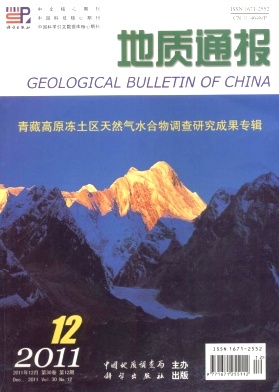MEI Bo-wen1, WU Meng1, SUN Zhong-jun2, YANG Zhi-bin2,ZHU You-hai3, LU Zhen-quan3, LIN Ren-zi1, MEI Hai1. Microbial geochemical (MGCE) detection test of natural gas hydrate in permafrost of Muli area, Tianjun County, Qinghai Province[J]. Geological Bulletin of China, 2011, 30(12): 1891-1895.
| Citation: |
MEI Bo-wen1, WU Meng1, SUN Zhong-jun2, YANG Zhi-bin2,ZHU You-hai3, LU Zhen-quan3, LIN Ren-zi1, MEI Hai1. Microbial geochemical (MGCE) detection test of natural gas hydrate in permafrost of Muli area, Tianjun County, Qinghai Province[J]. Geological Bulletin of China, 2011, 30(12): 1891-1895.
|
Microbial geochemical (MGCE) detection test of natural gas hydrate in permafrost of Muli area, Tianjun County, Qinghai Province
-
1. AE&E Geomicrobial Technologies (Beijing) Inc., Beijing 102200, China; 2. Institute of Geophysical and Geochemical Exploration, CAGS, Langfang 065000, Hebei China;3. Institute of Mineral Resources, Chinese Academy of Geological Sciences, Beijing 100037, China
-
Abstract
The gas hydrate-discovering well in the Muli coalfield was chosen as the analog model in this test to study the applicability and reliability of the microbial geochemical (MGCE) detection method in exploring onshore natural gas deposits. A positive correlation was detected between the surface soil microbial anomaly of the permafrost zone and the abundance of the subsurface gas hydrate deposit. Therefore, this method could sensitively and effectively predict the distribution of gas hydrate accumulations. In the exploration block, a mixed gas source was detected. The gas is dominantly thermogenic and subordinately of biogas source. The result of the test proves that the microbial geochemical exploration method is a sensitive, fast and cost-effective technique for exploring gas hydrate and petroleum reservoirs in Tibetan Plateau permafrost region and therefore could be widely employed in this region.
-

-
-
Access History







 DownLoad:
DownLoad: